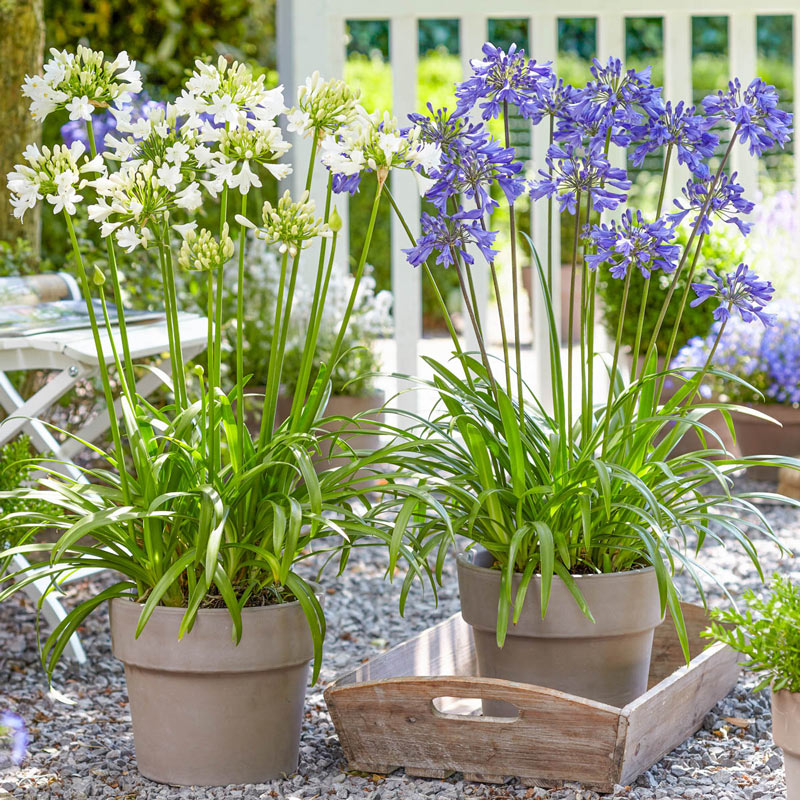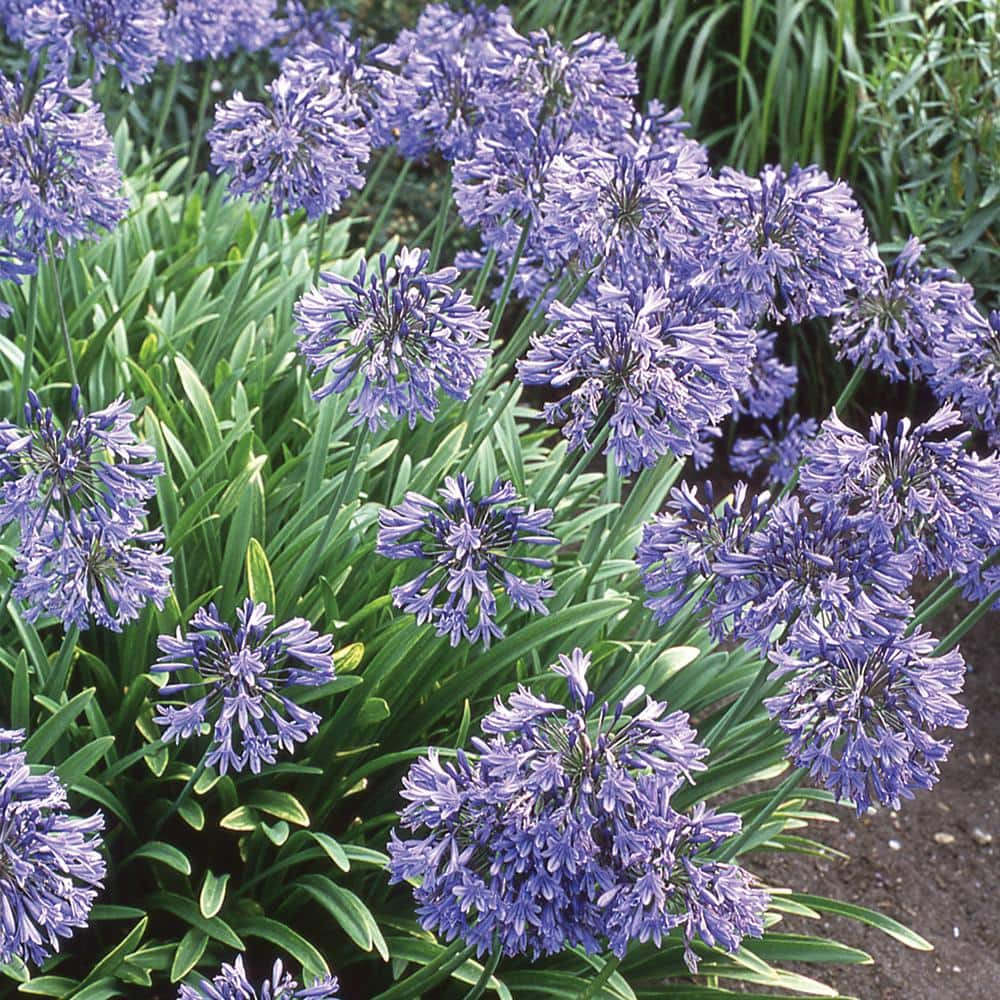Unleashing the Secret to Effective Agapanthus Farming: Tips and Tricks for a Flourishing Garden
In the realm of horticulture, growing agapanthus effectively needs a critical technique that incorporates numerous facets of plant care. With careful focus to information, one can unlock the keys to nurturing these sensational blooms, leading to a yard that flourishes with appeal and vibrancy. By comprehending the nuances of agapanthus growing, one can develop an environment where these plants grow and bloom abundantly. In the complying with discussion, we will certainly check out important tips and methods that will assist you in the direction of a thriving agapanthus garden, providing insights into ideal techniques, soil conditions, sprinkling methods, and a lot more.
Growing Agapanthus: Best Practices
When planting Agapanthus, appropriate dirt prep work is essential for ensuring successful growth and growth of these lovely flowers. Agapanthus, generally called Lily of the Nile or African lily, thrives in well-draining soil with a somewhat acidic to neutral pH level - Agapanthus. Prior to planting, it is important to modify heavy clay soils with organic issue such as compost or peat moss to enhance drainage and provide important nutrients for the plants
To grow Agapanthus, choose an area that gets complete sunlight to partial shade, as this will advertise healthy growth and abundant flowering. Dig an opening twice the size of the plant's origin ball and position the Agapanthus at the same deepness it was previously expanding. Delicately backfill the opening with soil, weighing down securely to eliminate any type of air pockets around the origins.
Water the recently planted Agapanthus extensively and continue to maintain the dirt equally wet, specifically during the plant's energetic growing season. Agapanthus. Using a balanced plant food once a month can additionally sustain the plant's development and blooming. By adhering to these ideal practices for planting Agapanthus, you can create a spectacular display of these fascinating flowers in your yard
Suitable Dirt Issues for Agapanthus
For optimal development and flowering success of Agapanthus plants, making sure the soil problems are optimal is important. Agapanthus likes dirt that is rich in nutrients, so including a well balanced fertilizer during the expanding period can advertise healthy and balanced growth and vivid blossoms.

Watering and Feeding Tips
To make sure healthy and balanced development and lively flowers, proper watering and feeding strategies are crucial for effective Agapanthus cultivation. Agapanthus plants gain from normal watering, especially during the expanding season. It is suggested to water deeply as soon as a week, making certain the dirt is damp but not waterlogged. Throughout hot weather or in pots, more regular watering might be required to stop the dirt from drying totally.
When it comes to fertilizing Agapanthus, a balanced fertilizer with equal components nitrogen, phosphorus, and potassium can be applied in the spring to promote healthy and balanced development and blooming. Slow-release plant foods are suitable for giving nutrients progressively over a prolonged period. Prevent over-fertilizing, as this can bring about too much vegetation development at the expense of flowers.
In addition, including organic matter like garden compost right into the dirt can boost nutrient degrees and boost soil framework, aiding in the overall health of the Agapanthus plants. By complying with these watering and fertilizing suggestions, gardeners can ensure their Agapanthus plants prosper and generate stunning display screens of blossoms.
Trimming and Deadheading Methods
Proper pruning and deadheading strategies play an important role in keeping the health and visual appeals of Agapanthus plants, enhancing the crucial methods of watering and feeding for successful cultivation. Pruning Agapanthus includes eliminating invested flower heads, yellowing or dead fallen leaves, and general shaping of the plant to promote far better growth. Deadheading, the procedure of eliminating faded flowers, not only improves the plant's look but likewise encourages additional flowering.
When deadheading Agapanthus, it is suggested to snip off the blossom stem at the base using sharp, clean shears. This procedure reroutes the plant's energy from seed production back right into root and vegetation development, advertising a much healthier and much more durable plant. Routine deadheading can prolong the blooming duration of Agapanthus and prevent self-seeding, which can lead to overcrowding.
In regards to trimming, Agapanthus typically gain from a light trim after flowering to clean up the plant and encourage fresh development. Cutting back the invested blossom stems and getting rid of any kind of dead or damaged vegetation aids preserve the plant's vigor and overall appearance. However, it is necessary to stay clear of visit reducing into the crown of the plant, as this can weaken its health.

Protecting Agapanthus From Vermins and Diseases
Executing efficient parasite and condition administration approaches is vital to securing the health and vigor of Agapanthus plants in farming. Agapanthus are generally hardy plants, however they can still succumb to different bugs and conditions if not appropriately looked after. One usual insect that affects Agapanthus is the Agapanthus borer, a caterpillar that passages into the plant, triggering damage to the flowers and fallen leaves. To avoid invasions, routine inspection of the plants is essential. If borers are identified, they can be by hand removed, or insecticidal soap can be made use of as a control procedure.
Along with pests, Agapanthus are vulnerable to conditions such as root rot and fungal click to read leaf spots. These concerns can usually be protected against by ensuring proper drain and preventing overwatering. If indications of disease appear, affected parts of the plant must be quickly gotten rid of to protect against additional spread. Fungicides might likewise be utilized as a treatment measure, complying with the producer's guidelines carefully. By staying attentive and addressing bug and disease concerns immediately, garden enthusiasts can help their Agapanthus flourish and flourish.

Final Thought
Finally, effective growing of agapanthus needs proper growing techniques, optimal dirt conditions, sufficient watering and feeding, normal trimming and deadheading, and defense from conditions and bugs. By adhering to these tricks and pointers, gardeners can make sure a flourishing yard loaded with stunning agapanthus blossoms. Agapanthus. Keep in mind to preserve constant care and attention to detail to promote the health and wellness and long life of these spectacular plants
When growing Agapanthus, proper dirt prep work is essential for ensuring effective home growth and development of these lovely blossoms.Water the newly planted Agapanthus thoroughly and continue to maintain the soil uniformly damp, specifically throughout the plant's active expanding season.For optimal growth and flowering success of Agapanthus plants, making sure the dirt problems are optimal is essential. When growing or transplanting Agapanthus, make sure the soil is well-prepared to offer the necessary foundation for the plants to develop themselves efficiently. One common parasite that impacts Agapanthus is the Agapanthus borer, a caterpillar that tunnels into the plant, triggering damages to the fallen leaves and flowers.